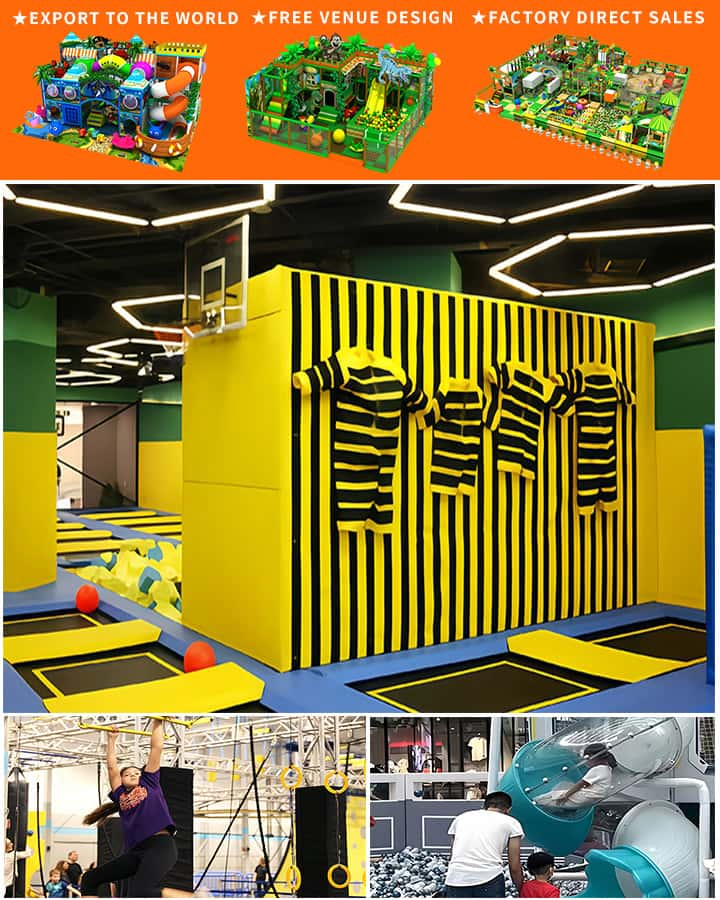Creating an indoor playground for toddlers is a fantastic way to ensure your little ones have a safe, engaging, and fun environment right at home. Not only does it provide endless entertainment, but it also encourages developmental growth and physical activity. Whether you’re looking to revamp a spare room or simply want to create a small play area in a shared space, here’s how to build the ultimate toddler indoor playground.
Planning the Space
Firstly, assess the available space where you plan to set up the playground. Whether it’s a corner of the living room, a dedicated playroom, or even a basement, make sure the area is safe and free from potential hazards. Measure the dimensions of the space to understand how much room you have to work with.
Selecting Safe Flooring
Safety is paramount when designing a toddler-friendly area. Consider using non-toxic, soft flooring options like foam mats, rubber tiles, or interlocking carpet squares. These materials cushion falls and prevent injuries more effectively than hard wood or tile floors. Make sure to cover the entire floor area where your child will be playing to provide comprehensive safety.
Essential Play Equipment
- Slides and Climbing Walls: Miniature slides and climbing structures are excellent for developing motor skills. Look for options that are age-appropriate and have smooth surfaces to avoid any scrapes or cuts.

Ball Pools: A ball pit offers sensory stimulation and can keep toddlers entertained for hours. Use plastic balls and ensure the pit has high sides to prevent balls from scattering all over the room.
Interactive Toys: Educational toys such as shape sorters, building blocks, and interactive books should be included to stimulate cognitive development. Choose a variety of toys that encourage both solo and group play.
Tunnels and Obstacle Courses: Pop-up tunnels and obstacle courses promote physical activity. They help develop balance and coordination while providing a fun, adventurous experience.
Safety First: Tips and Tricks
Anchor Heavy Furniture: Make sure any heavy furniture or equipment is securely anchored to the wall to prevent tipping.
Non-Toxic Materials: Ensure that all materials used in the playground are non-toxic and free from harmful chemicals. This includes paints, glues, and any other substances that might come into contact with your child.
Supervision: Always supervise your toddler while they are playing, especially if they are under three years old. Even the safest play areas can pose risks without proper supervision.
Incorporating Educational Elements
An indoor playground is not just about fun; it’s also an opportunity for learning. Integrate educational elements like alphabet puzzles, number games, and color-matching activities to make the experience enriching. You can also include a small bookshelf filled with age-appropriate books to foster a love for reading.
Decorating the Play Area
Make the space inviting with vibrant colors and themes that appeal to toddlers. Use decals on walls featuring characters from favorite shows or nature scenes. Add some comfy seating for reading time or quiet moments.
Maintenance and Upkeep
Regular cleaning and maintenance are crucial to keep the playground hygienic and safe. Wipe down surfaces daily, vacuum the floor mats weekly, and inspect equipment regularly for wear and tear. Store toys in organized bins to keep the area tidy and clutter-free.
Conclusion
Creating an indoor playground for your toddler at home is a rewarding project that provides numerous benefits for their physical, emotional, and cognitive development. With thoughtful planning, safe materials, and a touch of creativity, you can transform any space into a magical world of fun and learning. Happy playing!




